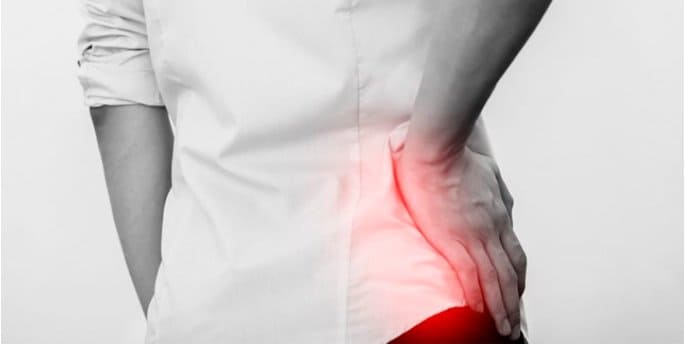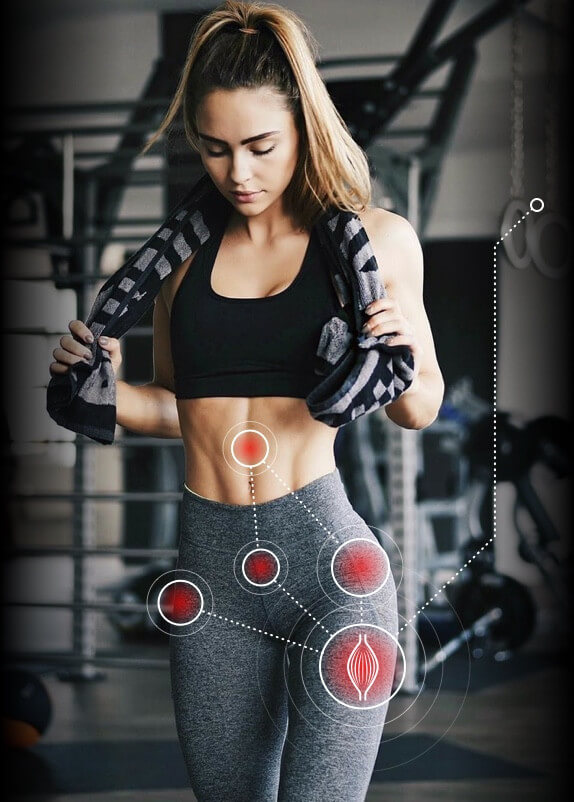Hip pain is a condition that a majority of people get at some point in their lives. This type of discomfort typically radiates from the joints in your hips. Due to it location, it’s not uncommon for people to also experience pain in areas surrounding these joints, such as the knees, thighs or region directly above the hips.
During your life, hips undergo a lot of abuse from daily activities, which can cause pain that stems from the bones in your hips. Some of the most common causes of pain include
Fractures – Fractures of the hip can cause sharp hip pain that comes about suddenly. A fracture can be serious if left untreated and can cause major problems. As you age, hip fractures become more common. Studies indicate that this is likely because the bones weaken.
Infection – Just like any other area in the body, your joints and bones can become infected, which can lead to hip pain. If left untreated, an infection can spread throughout your body and cause pain elsewhere.
Osteonecrosis – This is the pain in the hip caused by a lack of blood flow. This condition can be caused by several factors, including lack of exercise.
Arthritis – A condition caused by wear and tear on your hips. Arthritis pain in the hips is sometimes felt more in the groin and thigh regions.
While these are some common causes of hip discomfort, other conditions may cause pain in this region, such as groin strains, bursitis, and snapping hip syndrome. You typically feel pain from bursitis when you trying to stand up after sitting. You could also feel it while walking up stairs or driving a car. Not all of these conditions, however, indicate a problem with your hip. For example, snapping hip syndrome usually indicates a back problem rather than a hip condition.
Hip pain is difficult to live with. If you’re suffering from pain in your hip, you’ll be happy to know of some steps that can lessen the pain. Remember that home remedies for hip pain aren’t always enough, and sometimes professional help is required. Here are some steps that could lessen pain in your hips:
- Avoid participating in activities that overwork your hip. These activities might make your hip pain even worse.
- Use over-the-counter medications to lessen the pain, including acetaminophen and ibuprofen, which can alleviate inflammation.
- When sleeping at night, don’t sleep on the side you have hip pain on. Instead, try putting a firm pillow or blanket between your knees. This takes the majority of the strain off your hips.
- If you’re overweight, take some measures to lose weight. This takes the weight off your hips during physical activities.
- Avoid standing for long shifts. If you work a job that needs you to stand a prolonged period of time, try putting down a soft pad. Try to evenly distribute weight between both of your legs to avoid putting too much pressure or strain on one hip.
- By shoes that are flat on the bottom, and avoid wearing heels. Also, choose footwear that is comfortable to wear.
Another way to relieve hip pain is to participate in physical activity. Overusing your hips can sometimes make the problem worse, so here are a few ways you can avoid that when joining physical activities:
- If you suffer from flat feet, buy special shoes that better support your arches. You can also buy shoe inserts to add more support.
- Before doing any workout, try warming up. This includes stretching out your quadriceps.
- When running, avoid going downhill. If you must, then try walking downhill instead. This will put less stress on your hips.
- If given the choice, try swimming instead of riding a bike or running. Swimming is a great way to get your hips in motion without the added weight.
- If running is your favorite activity, look for smooth areas to run on. Tracks dedicated to running are a great option. Always avoid asphalt or cement.
- Buy running shoes that fit and are made sturdy. They should also be well cushioned to lessen the force of impact.
- Cut back on the exercises you do.
Talk to your healthcare provider before you participate in physical activities. If you have arthritis or injured your hip in the past, your doctor may have a list of activities to stay away from. You can also ask for a list of activities that are hip-friendly.
While home remedies like those talked about above are helpful, sometimes hip pain requires the attention of a seasoned professional. If your hip hurts after a fall, you should go to the emergency room right away. You should also go to the hospital if you notice any bleeding, bruising or bad deformation in your leg or hip. Finally, if you’re unable to stand because of the pain in your hip, visit the emergency room right away.
Some hip pain doesn’t require a trip to the emergency room, however. Sometimes you simply need to make an appointment to see your physician. Consider contacting your health care provider if you
- experience hip pain for longer than one week after practicing the home remedies talked about above,
- develop fever or rash along with your hip pain, or
- take steroids and have pain that develops in your hip.
If you find that you need to visit your doctor for hip pain, there are a few things you should expect when you walk in the door. Knowing what to expect can might make the entire visit less stressful. To start with, your doctor will ask you a serious of questions. Common questions include:
- Where on your body are you feeling pain?
- How long have you had the pain?
- Are there any activities you take part in that make your pain worse?
- What have you already done to ease your pain?
- How is your ability to stand or walk with your current pain level?
- Are you currently taking any other medications for this problem?
After asking these questions, some doctors may order an X-ray. In some cases, it may be necessary for your doctor to order an MRI scan as well. Depending on what the scans show, your doctor could prescribe anti-inflammatory drugs or advice you to take over-the-counter medications.



























































